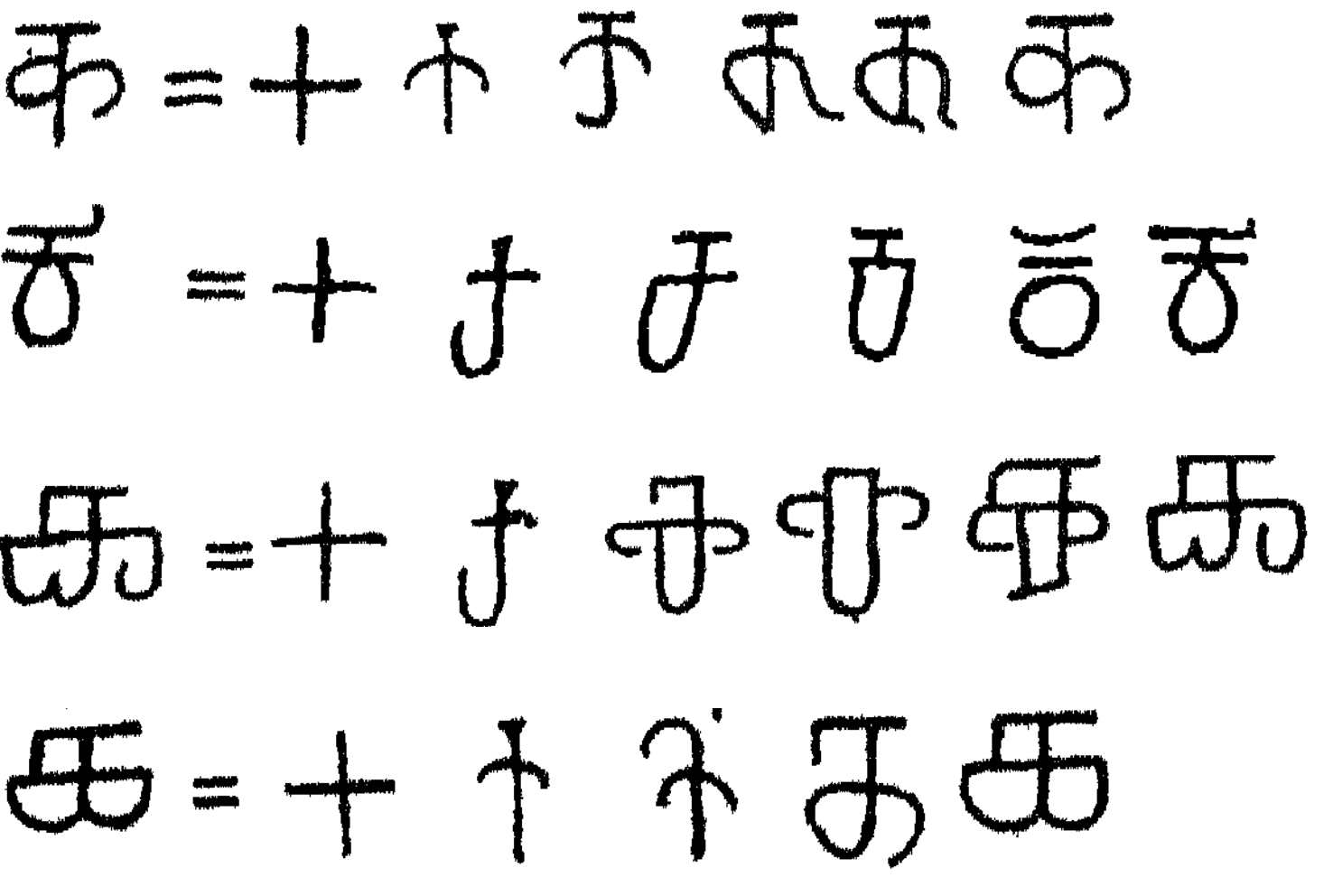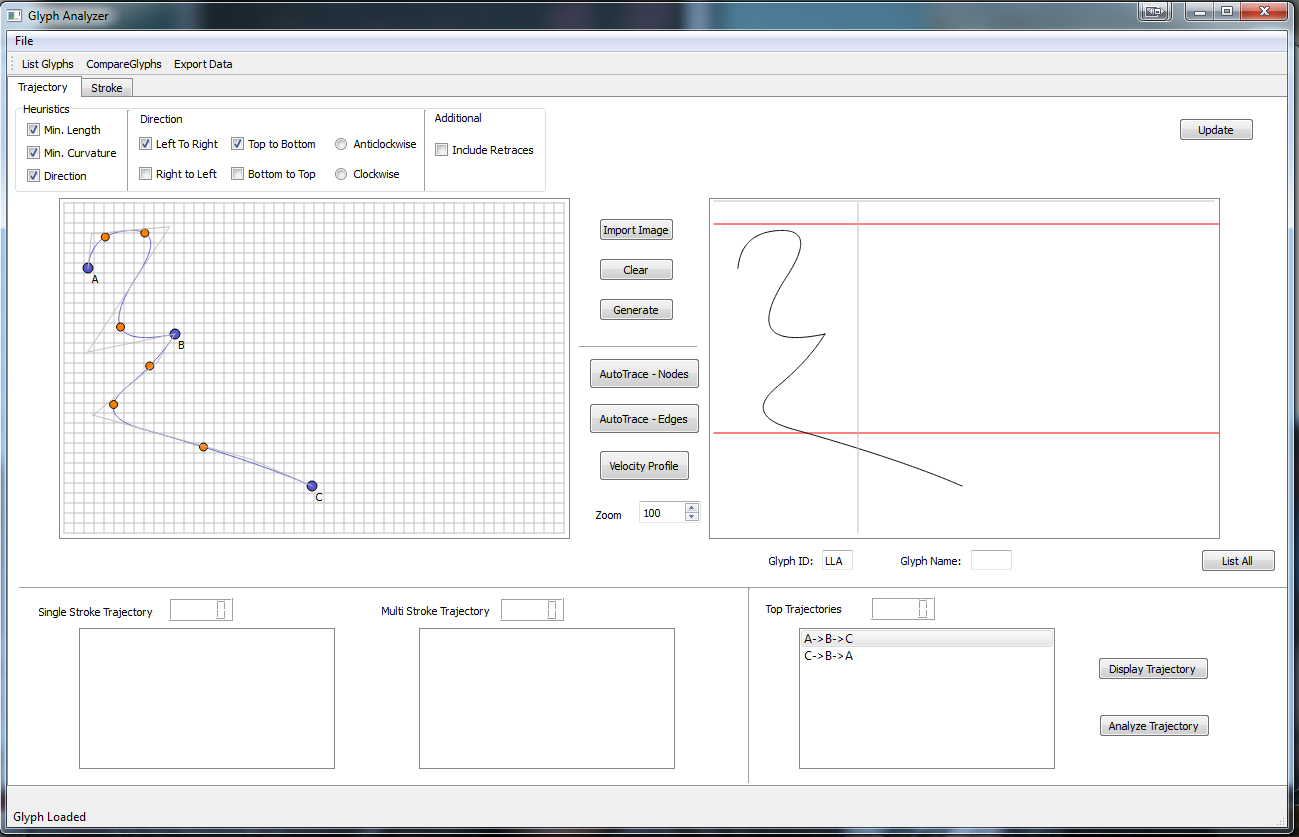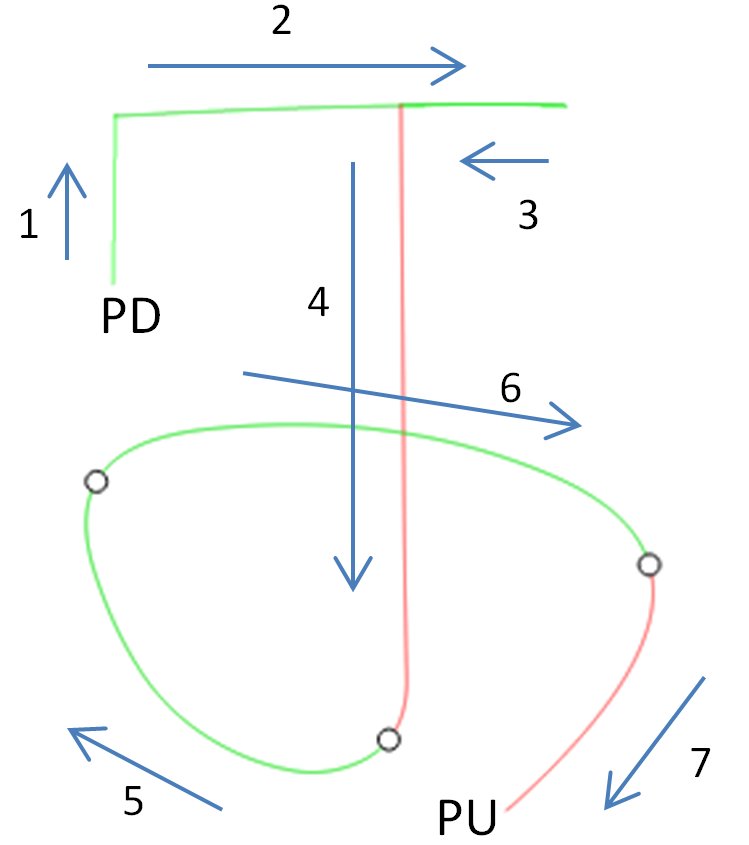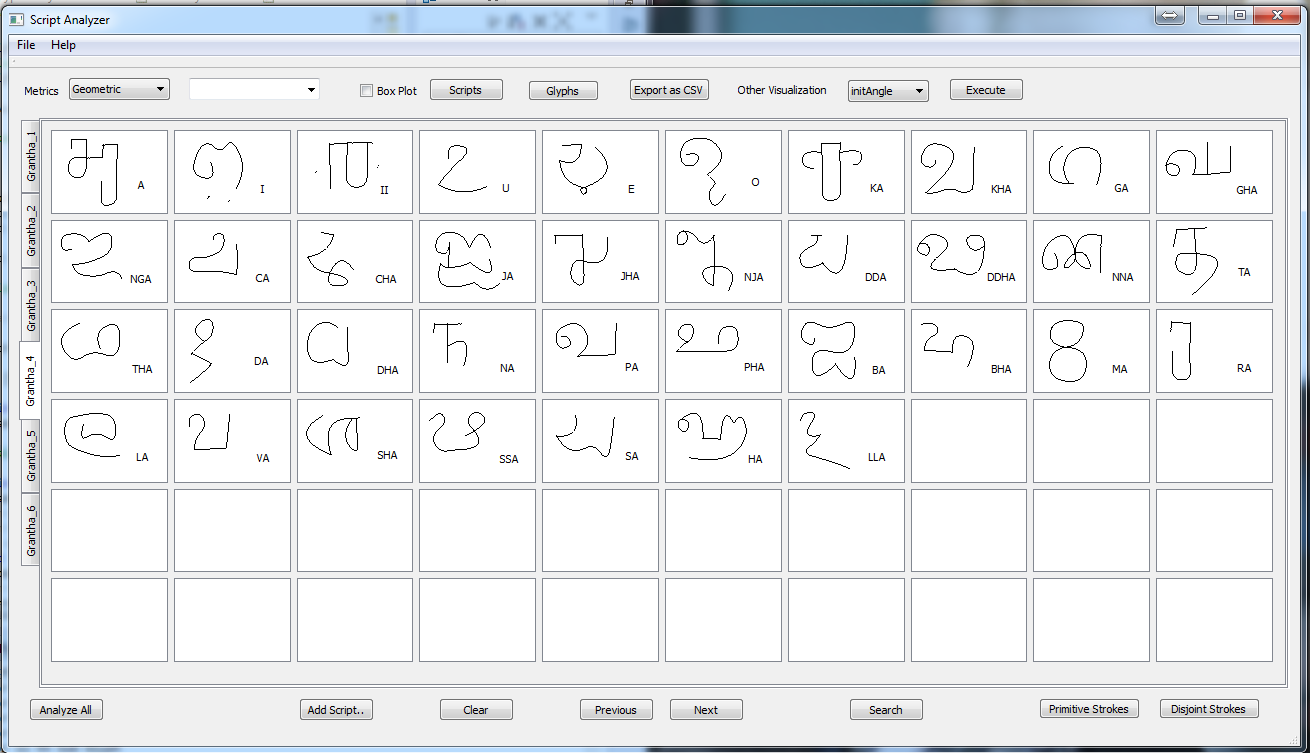Digital Paleography
Vinodh Rajan, Mark-Jan Nederhof
Overview
Paleographic analyses have been traditionally performed qualitatively and also in many cases manually. But with various digital corpora appearing in recent days especially with respect to manuscripts, there is a growing need to perform innovative digital paleographic analyses. We research on various innovative quantitative techniques that can be applied to the field of digital paleography.
While paleography is generally associated with assigning provenance (through scribe, location and/or time) to a scribal artifact, we particularly are interested in descriptive paleography that focuses on the evolution of scripts and their relationships to each other as well as looking for mechanisms to explain these phenomena.
Quantifying Scribal Behavior
Most digital paleographic analyses (and even within some schools of paleography), characters are analyzed as inanimate forms. But in fact, characters inherently contain information regarding movements of the writing implement (i.e. Ductus), which animates them and provides profound information about their formation and therefore about scribes.
We have proposed a novel computational framework that operates on the paradigm of handwriting information of characters to quantitatively study scribal behavior. The framework recovers trajectories of characters, which are used as the basis to perform quantitative analyses. With this recovered information, we have suggested a method to decompose characters into their underlying primitives, i.e. strokes, using handwriting kinematics, and to construct a hierarchical structure. We have also proposed a range of intuitive metrics to quantify scribal behavior, which are to be extracted from the aforementioned stroke structure of characters. We have explored mathematical models of handwriting production that can be used in conjunction with our framework to quantitatively study changes in scribal behavior in finer detail.
By applying the framework and proposed metrics to the development of Indic scripts, we have discovered several interesting trends and phenomena in scribal behavior during the development.
Software
The prototype of our framework has been released as an Open Source software and can be download from the following GitHub repository page: https://github.com/virtualvinodh/scriptanalyzer.
The manual for the prototype is available here: https://standrews.eu.qualtrics.com/jfe/form/SV_emNz5jO1LUt1cpL
Furthermore, we have also released all the associated files of our case study (script repositories [for the framework], handwriting models, R scripts, quantified features), which can be accessed here: https://github.com/virtualvinodh/indicdevanalysis.
Future Work
The main driving force behind our research was to support experts performing descriptive paleography by equipping them with effective computational methods and metrics. But with the metrics that we propose, it is possible to perform the detection of the provenance of characters in terms of scribal behavior. Future research will be to explore this using statistical distances/visualization and machine learning.
Publications
Rajan, V. (2016). Quantifying scribal behavior : A novel approach to digital paleography. PhD Thesis. University of St Andrews. (https://research-repository.st-andrews.ac.uk/handle/10023/9429)
Rajan, V. (2016). Quantifying Scripts: Defining metrics of characters for quantitative and descriptive analysis. Digital Scholarship in the Humanities. (http://dx.doi.org/10.1093/llc/fqw030).
Rajan, V. (2015). How Handwriting Evolves: An Initial Quantitative Analysis of the Development of Indic Scripts. Proceedings of the 17th International Graphonomics Society Conference. (http://virtualvinodh.com/pdfs/IGS_Paper.pdf)
Rajan, V. (2014). Framework for Quantitative Analysis of Scripts. Proceedings of Digital Humanities, DH 2014. (http://dharchive.org/paper/DH2014/Paper-200.xml)





